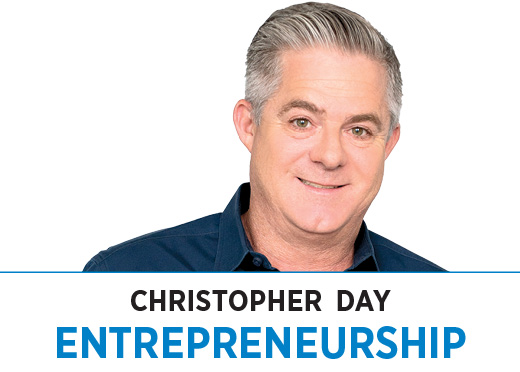Subscriber Benefit
As a subscriber you can listen to articles at work, in the car, or while you work out. Subscribe Now We are not merely passive spectators of the future. We are the active architects shaping it.
We are not merely passive spectators of the future. We are the active architects shaping it.
To have a robust entrepreneurial, innovative and skilled professional ecosystem with on-ramps for all, we need talent. How do we transform from underserved to unstoppable?
In the late 1960s, NASA commissioned scientists George Landom and Beth Jarman to develop a test that could effectively measure creative potential, with 1,600 children between the ages of 4 and 5, to find creative geniuses. The results revealed that 98% of the children were creative geniuses. At 10 years old, the children were tested again, and only 30% were considered creative geniuses. They were tested again five years later, and only 12% were considered creative geniuses. By the age of 25? Only 2%. Some say this is an anomaly, but the results have been replicated a million times, according to author Gavin Nascimento.
Two kinds of thinking take place in the brain. Both use different parts of the brain and are totally different paradigms for how thoughts form in our minds. One is called divergent—that’s imagination, used for generating possibilities. The other is called convergent—that’s judgment, used for making decisions or criticizing. Divergent thinking works like an accelerator, and convergent thinking acts as a brake on our best efforts.
Over the last 12 years, I have been asking my son and kids his age random questions as they progress through school. One of those included the perception of STEM. Early elementary school responses sounded something like, “Huh?” By middle school, they had “heard of it.” And by late middle school into early high school, many responses shifted to, “That’s only for smart kids.”
Similarly, I would ask questions about careers in the trades; the sentiment was that somehow those are less-desirable, low-paying jobs. Both STEM and trade professions are, of course, critical for a well-rounded, vibrant ecosystem. In STEM, over 50% of the careers are not technical. Rather, they are creative or operationally oriented. In the trades, there are many respected and important high-paying career opportunities.
So why do our children seem to have negative perceptions of both? Remember, only 2% of adults creating the canvas of learning are considered creative geniuses. Have we ever stopped to consider what our children hear?
In today’s world, the language we use is more than a means of communication; it is a powerful tool that shapes perceptions, influences attitudes, and molds the aspirations of our children and future leaders. As current leaders, educators and parents, it is crucial to recognize the impact of our words. Could other words such as marginalized and underserved that are commonly used to highlight inequities be inadvertently reinforcing a narrative of perceived deficiency and limitation?
Should we reframe our language to inspire and empower the next generation of entrepreneurs, innovators and essential skills? Does our language subtly suggest that potential is circumscribed by circumstance? Does it internalize the notion that presence in certain fields is the exception, not the norm? Does this language inadvertently instill a sense of “otherness,” limiting aspirations and belief in one’s own potential?
When children hear phrases and words such as poor, STEM, trades, marginalized or underserved, they might internalize these labels in ways that limit their self-concept or potential, or perpetuate negative perceptions. These terms can inadvertently suggest to children that they are inherently lacking.
When thinking about the possible through the lens of all the above, multiple words and phrases come to mind: opportunity-rich, diverse visionaries, growth communities, emerging leaders, rising innovators, trailblazers, changemakers, skilled professions, essential professions and so many more. These words spark inspiration of being on a path of growth and development, ready to take on challenges and make a significant impact, and they instill a sense of creativity and forward-thinking, capability of driving change and developing new solutions, ability to influence environment and effect positive transformation, and so much more.
How we would go about adopting a new lexicon is not just about changing words; it is about fostering a mindset and culture that encourages growth, innovation and resilience. Some examples of how we can accelerate learning journeys based on our children’s strengths include putting the ‘A’ for arts back into STEM and leaning into programs such as RISE and STARTedUP that are empowering a generation of leaders with an “opportunities are everywhere” mindset.
To cultivate an environment where children feel empowered to innovate and lead, we shift our language from deficit-based to strength-based. Words have the power to transform mindsets and ignite potential. Instead of focusing on what is lacking, we could emphasize what is possible.
We can become change agents through multiple avenues, such as:
◗ Education and awareness. Raise awareness among educators, parents and leaders about the impact of language.
◗ Role models and stories. Share stories of individuals from diverse backgrounds who have achieved great success.
◗ Curriculum development. Integrate strength-based language into educational materials and curriculum.
◗ Media and communication. Encourage media outlets and content creators to adopt positive language when discussing issues of diversity and inclusion. Highlight the achievements and potential of individuals from all backgrounds.
The words we choose to educate our children can either limit or unlock their potential. By shifting from deficit-based terms to positive proactive alternatives, we can foster a culture of innovation, entrepreneurship and skills-based talent for the future. We can empower our children with language that inspires them to see themselves as emerging leaders, rising innovators, trailblazers, future builders, changemakers and skilled contributors.
Imagine a world where each child’s journey has choices, tailored to their unique learning style, pace, interests and strengths.•
__________
Christopher Day is CEO of Elevate Ventures.
Please enable JavaScript to view this content.

This is one of the most intelligent articles I’ve read in a long time!